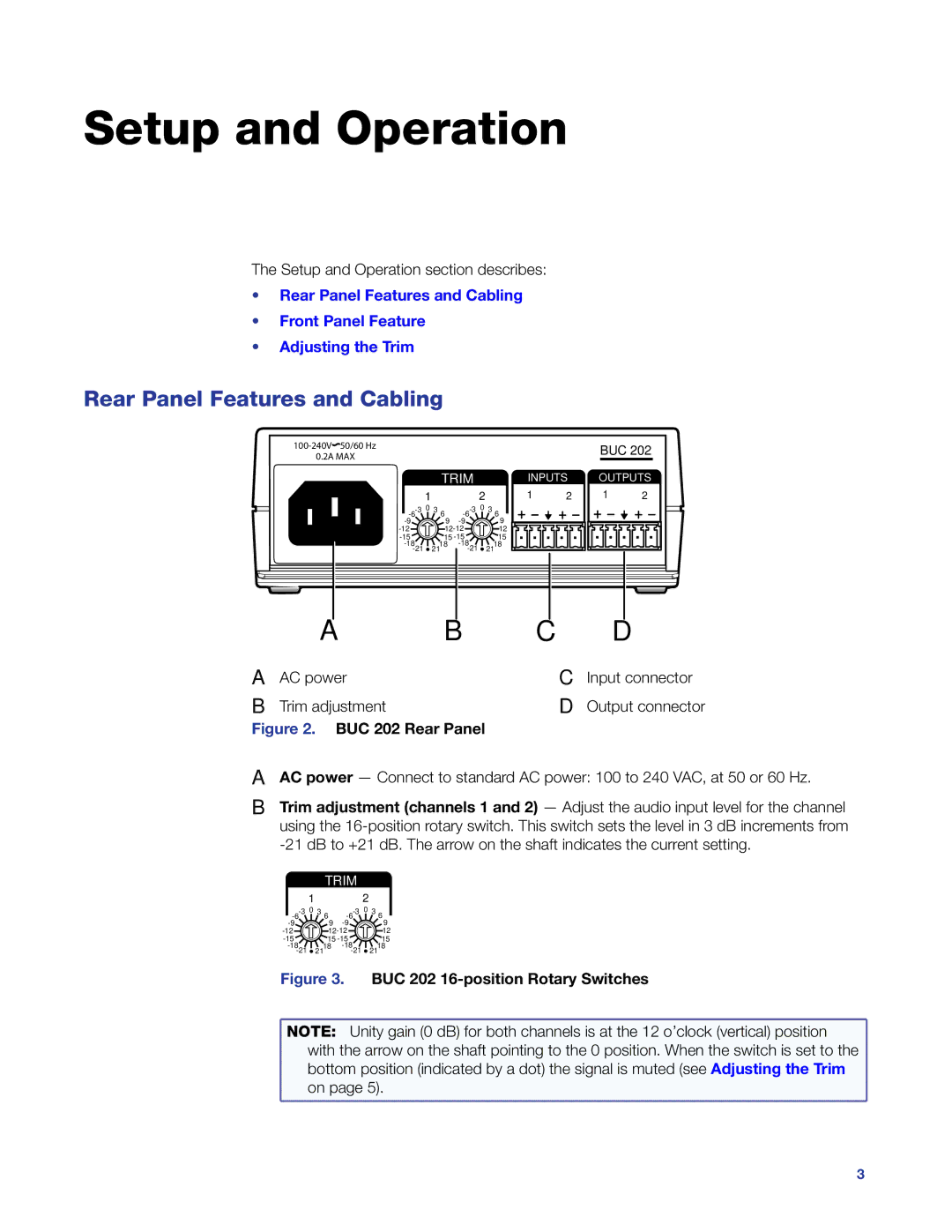BUC 202 specifications
Extron Electronics has long been a key player in the professional audiovisual industry, providing innovative solutions for signal management and distribution. One of its standout products is the BUC 202, a robust and efficient baseband upconverter that has garnered attention for its versatility and performance.The Extron BUC 202 is designed for transmitting and receiving high-quality signals over coaxial and fiber optic cables. Its primary function is to convert standard baseband video signals into RF signals, making it easier for users to integrate various audio-visual sources into broadcast and distribution systems. This capability is particularly beneficial in a range of applications, from corporate environments to educational institutions and government facilities.
Key features of the BUC 202 include dual-channel support, allows users to manage two video sources simultaneously. This flexibility is invaluable for users who need to switch between different input signals without sacrificing quality. Additionally, the device supports multiple video formats, including composite video, S-video, and YPbPr, ensuring compatibility with a wide array of video sources.
One of the standout technologies used in the BUC 202 is its advanced filtering system. This technology minimizes distortion and crosstalk, producing crisp and clear video outputs. Moreover, the BUC 202 incorporates automatic gain control, which maintains consistent video quality across varying input levels, a feature crucial for high-stakes broadcasts where quality cannot be compromised.
The BUC 202 is also designed with user-friendliness in mind. Its front panel features easy-to-use controls and indicators, enabling quick configuration and troubleshooting. The device supports a variety of control options, including RS-232 and Ethernet, allowing for seamless integration into existing AV networks.
Reliability is another hallmark of the BUC 202. Built with high-quality components and a rugged chassis, it can withstand the rigors of daily use in demanding environments. Coupled with Extron's commitment to customer support and service, users can rely on the BUC 202 for their long-term AV needs.
In conclusion, the Extron BUC 202 is a feature-rich baseband upconverter that excels in flexibility, video quality, and ease of use. Its advanced technologies and robust design ensure that it meets the demands of a myriad of professional AV applications, making it a valuable addition to any broadcasting or distribution system.

